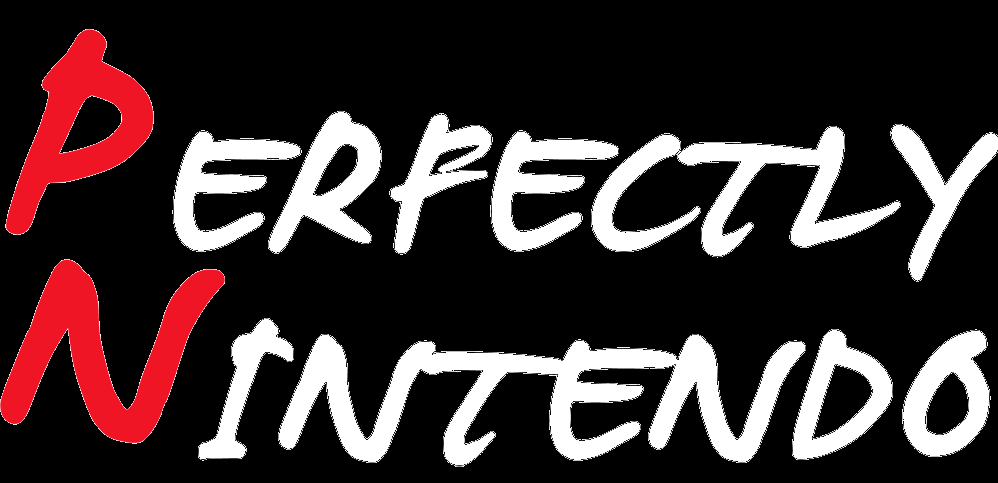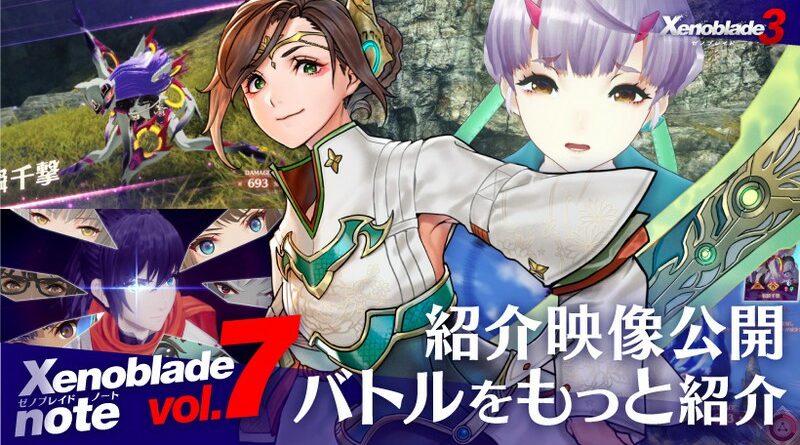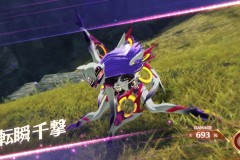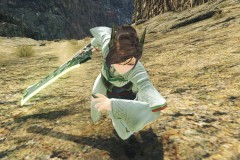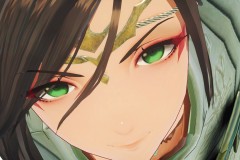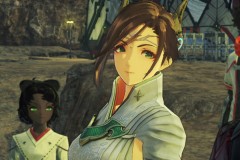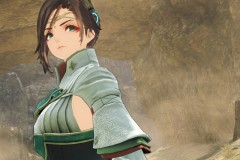Xenoblade Chronicles 3: Xenoblade Note Vol. 7 (Overview trailer, Battle System, Ouroboros, Heroes)
Nintendo have shared the 7th Xenoblade Note blog post on their Topics website, providing us with some more details about Xenoblade Chronicles 3. This time, the post shares some more details about the battle system, Ouroboros, two Heroes, and more!
Here’s the list of blog posts available:
- Xenoblade Note Vol. 2 (Battle System)
- Xenoblade Note Vol. 3 (Exploring the world)
- Xenoblade Note Vol. 4 (Battle System: Arts and Fusion Arts, Classes and Class Change, Cancelling, Chain Attacks, more)
- Xenoblade Note Vol. 5 (Heroes, Cooking, Gem Crafting, new music tracks)
- Xenoblade Note Vol. 6 (Xenoblade Chronicles 3 Direct)
- Xenoblade Note Vol. 7 (Overview trailer, Battle System, Ouroboros, Heroes)
- Xenoblade Note Vol. 8 (Side activities, Expansion Pass, Commercials)
Here’s the footage featured in this 7th Xenoblade Note blog post for Xenoblade Chronicles 3:
Again, nothing really new this time, but at least, the footage is now in top quality (1080p/60fps)!
And before we go over the contents of the blog post, here’s the Japanese overview trailer shared earlier today:
System – The Fusion of two protagonist: Ouroboros
Noah, Mio, and the others can undergo a strange phenomenon that allows them to fuse, called Interlink. Each pair of protagonists can transform into an overwhelming powerful form: Ouroboros.
Ouroboros and Talent Arts
As an Ouroboros, you can launch powerful Talent Arts. But before you can do so, you first need to fill up the Talent Art Gauge, which is done by using regular Ouroboros Arts, but also by cancelling attacks.
Avoid overheating!
As mentioned previously, you can trigger Interlink at any time during battle. While it’s active, you can use powerful Ouroboros Arts as many times as you want, but you need to be careful: the Heat Gauge fills up over time. Once it’s full, you will overheat, which will put an end to Interlink and force you to wait through a cooldown period. Make sure to use one of the powerful Ouroboros Talent Arts before that happens!
Deciding when to Interlink
Since you can trigger Interlink at any time during battle, that means that, on paper, you can turn into an Ouroboros right at the start of battle. But there’s a catch: Interlink has three levels, and by using Fusion Arts in battle, you can raise that level from 1 to 3. Naturally, the higher the level, the more powerful your moves become. Therefore, it’s pretty important to think about WHEN to trigger Interlink: do you turn into an Ouroboros right away, or wait until you’ve powered up by increasing the Interlink Level?
But while Ourobors are great when it comes to offense, they can also be used defensively. For example, if your party is running low on health and you’re starting to feel the heat, you can turn into an Ouroboros to turn the tables!
Strengthening your Ouroboros – Soul Tree
Ouroboros are extremely powerful from the start, but you can further improve their abilities thanks to a feature called Soul Tree. Throughout the game, you can gain points by performing various actions in battle, and taking part in certain activities: those are called Soul Points. You can then use those SP on the Soul Tree to enhance the abilities of each Ouroboros. For example, you can boost up their attack power, extend the duration of the Interlink (allowing you stay in Ouroboros form longer), or make it possible to cancel its Arts (extremely handy if you want to use lots of Talent Arts as an Ouroboros!).
System – Cooperate with allies to launch Chain Attacks
Chain Attacks are special attacks you can unleash in coordination with your llies. By chaining combos, performing actions that correspond to your Battle Role, and by cancelling attacks, you fill up the Chain Attack gauge.
Once you’ve triggered a Chain Attack, you need to select the characters that will take part in the attack. Here’s how it goes:
- first, you need to select a strategy (called Chain Order), with 3 possible options
- then, you select a character
- and finally, you select an Art to use
You then keep repeating steps 2 and 3 until the Chain Attack is over.
A key element of Chain Attacks: Tactical Points (or TP for short). When you select a character during a Chain Attack, their TP is added to the total (top right corner of the screen), and if that total reaches/exceeds 100% (100 TP), then the Order will be completed and you will be able to use powerful Chain Arts. Not all Orders are equal: each one has its own rating, and naturally, the higher the percentage, the more effective it will be.
And in case you’re wondering: yes, Ouroboros can take part in Chain Attacks too. Sometimes, an Order including an Ouroboros will appear when you trigger a Chain Attack: if you select it and complete it, you will be able to use moves even more powerful than those offered by the other Orders.
System – Combos give you the upper hand in battle
By coordinating attacks with your allies and connecting the right Arts, you can unleash Combos. There are two types of Combo chains.
Burst Combos
Break (destroy enemy defenses) > Topple (the enemy is knocked to the ground) > Daze (the enemy is stunned) > Burst, where the enemy is hit by a powerful blow. It can be followed up by other moves in quick succession if you manage to connect with a Burst. Doing so will not only calm enraged enemies, it will also make them drop items!
In Xenoblade Chronicles 3, powerful enemies such as Unique Monsters have a “Rage Line” on their HP gauge. If their HP goes below the flame symbol, they become enraged. If that happens, you need to be extra careful, because enraged monsters boast increased attack power, and they can launch even more powerful attacks. When they become enraged, use Burst Combos to calm them or use Chain Attacks to finish them off quickly.
Smash Combos
Break (destroy enemy defenses) > Topple (the enemy is knocked to the ground) > Launch (the enemy is launched into the air) > Smash (the enemy is violented smashed to the ground, dealing tons of damage).
You can instruct the other party members to focus on one type of combo chain over the other via the Tactics menu. That way, if you want to focus on dealing lots of damage with a Smash combo, or if instead, you prefer the extra effects offered by Burst combos, your allies will choose the appropriate Arts with the right timing.
System – Giving instructions to allies: Tactics
In battle, you can give orders to characters you’re not controlling using Tactics.
Concentrate Attacks
Party members will focus their attacks on the enemy targeted by the character you’re controlling. In the top right corner of the screen, a number indicates the number of enemies you’re up against. As mentioned previously, if you ever find yourself fighting several monsters at once, it’s recommended you take them out one by one!
Regroup
Party members will gather around the character you’re controlling. If you select this option, party members will stop auto-attacking or using Arts until you select “Disband” (or choose another Tactics option). Regroup is extremely useful when party members are running low on health and you want your healer to patch them up.
Focus on Fusion Arts
Party members will focus on Fusion Arts. This is pretty handy when you want to raise the Interlink level. The more you wait so as to be able to use Fusion Arts, the less opportunities you will have to use Arts. Finding the right balance can be quite tricky!
Fusion Arts allow you to fuse Arts from a Keveth class with those of an Agnus class (and vice versa). For example, Noah’s class, Swordfighter, is from Keves, which means you can fuse its Arts with the Master Arts from any Agnus class. Unfortunately, you cannot fuse the Arts of classes from the same country.
System – Introducing two new Heroes
Heroes are special characters that join your party to give you a hand during your adventure. But before they join you, you need to befriend them: this is done by completing special quests known as Hero Quests, which allow you to deepen your bond with them.
Let’s introduce two new Heroes.
- Fiona (voiced by Aoi Yuuki in Japanese). She’s a special Healer who can give random buffs to allies. Her class is Signifer, and her Arts allow you to power up the entire party with potent buffs. She hails from Agnus, and she waves a large flag-like blade around to boost the moral of her allies. Fiona is said to be an extremely kind and gentle person, and people at her home Colony affectionately call her “Fifi”. She’s very friendly, and probably far too kind for a soldier.
- Alexandria (voiced by Ami Koshimizu in Japanese). Her class is Incursor (an Attacker), and she uses her sword, coupled with unparalleled swordsmanship, to cut down enemies. Each time she gets a critical hit, her attack power increases, which means she gets more and more powerful as the battle progresses. Alexandria is a well-known figure in Agnus, thanks to her swordsmanship and her ability to tell at a glance how a battle is going. Like some other Heroes, she first considers Noah and the others as enemies and attack them.
Worldview – Introducing a new music track
This 7th Xenoblade Note blog post for Xenoblade Chronicles 3 introduces another music track. It’s called “You Will Know Our Names ~ Finale”, another battle theme. This one plays when you’re up against Unique monsters, which are rarer but powerful monsters (with two names) that you will occasionally encounter while exploring the world. When you’re fighting a Unique monster, listen to the music: it will give you the courage to face even the strongest of enemies!
Xenoblade Chronicles 3 (Switch) comes out on July 29th worldwide.
Source: Nintendo
